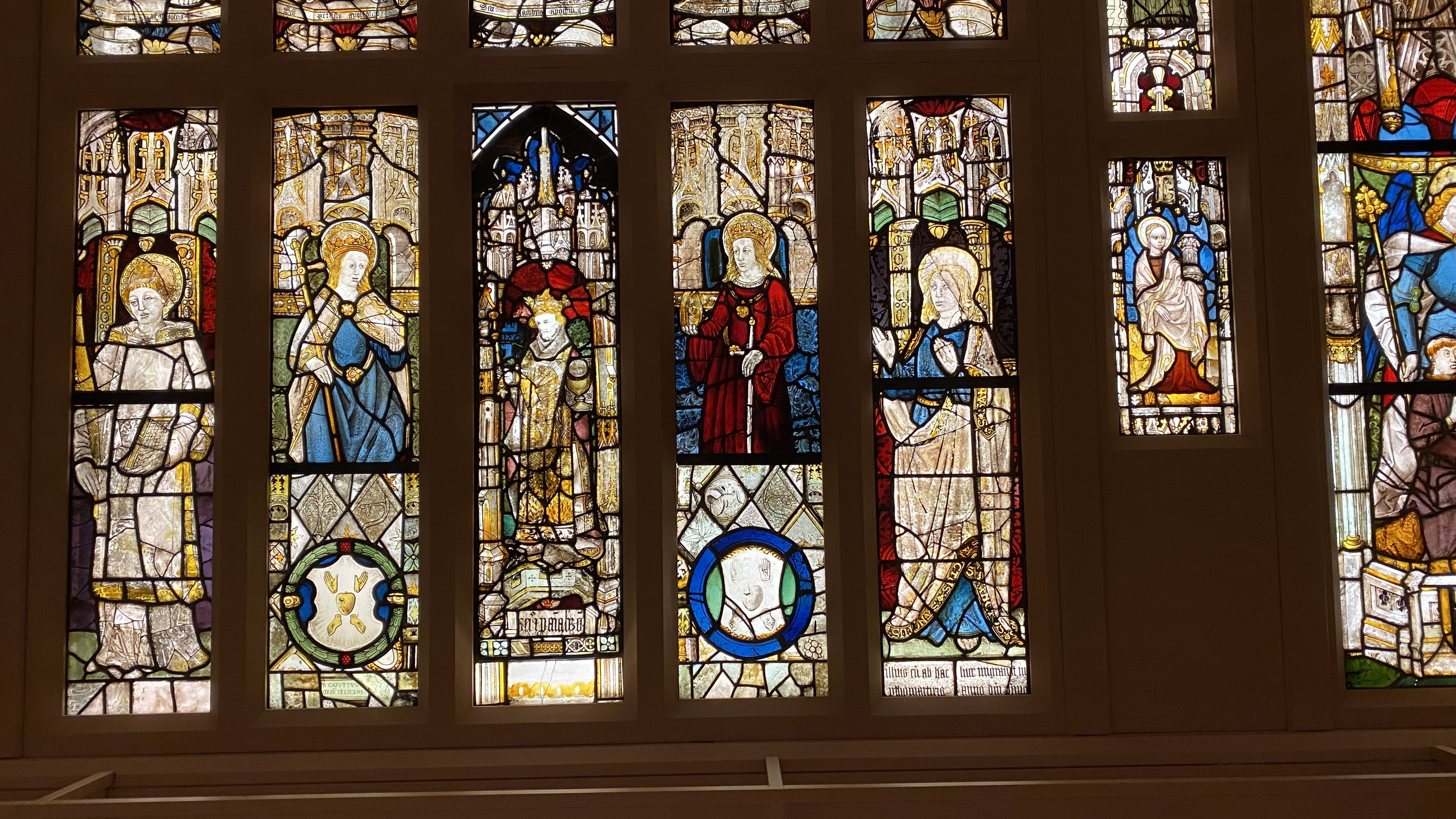Five Saints in a Composite Window

1475-80 (left and right panels)
1450-60 (center panel)
Stained glass
Metropolitan Museum of Art, Acquisition No. 12.210.1a-bb
The center panel is not from the same window as the others. It pictures a king holding a scepter in his right hand. One imagines that the chalice on the right is held in his left hand, but it is disproportionately large and may have come from yet another window. Behind the king is a red circle that could be an unusually large halo.
The museum identifies the figure as St. Edward the Confessor. He stands on a plinth that features two St. Edward Crosses, and the inscription could conceivably be read as "sanctus edwardus." However, there is no ring, the usual attribute of this saint. Nor is there any mention of a chalice in any of his vitae that I have seen. In Caxton's translation of a Latin source the king did once experience a vision of Christ at Mass when the priest held up the host, but in that part of the liturgy the chalice sits on the altar.
The figure on the far left is St. Stephen. The odd arrangement sitting on his tonsured head appears to be a heap of stones, his attribute referring to the manner of his death. Other features traditionally associated with Stephen are the closed book, the palm branch signifying martyrdom, and his garment, the sleeved vestment known as a dalmatic.
Flanking St. Edward are two female saints, Margaret of Antioch and Catherine of Alexandria. The former is identified by the crown and the long cross; the latter by the spiked wheel in her hand, the crown, and the sword. The designs behind them are identical so they must have come from the same window. However, the figures have been cut off at the thigh, a rather un-medieval choice, so it is possible that arma christi symbols at the bottom are from yet another window — or from two others, considering the differences between them.
The museum identifies the figure on the far right as St. John the Evangelist. The edges of his garments repeat the word sanctus again and again, perhaps a reference to Revelation 4:8, which he authored. There is no poison chalice, his usual attribute in portraits, so the only feature that might identify him as John is his youthful appearance. One would love to find in his hand the ring he miraculously returned to St. Edward, but no, his hands are raised in the orant gesture.
The inscription beneath John's figure seems unrelated to the saint and may have been just trimmed and spliced in to fill out the space. It reads illius cum ab hac luce migravit in … prothomartiris anno domini … It seems as if the word left off after in would have been die, so the whole would translate "…of him when he left this light on the day of the Protomartyr in the year of our Lord…" The letters specifying the year are obscure. The Protomartyr is St. Stephen, whose feast day is December 26. The phrase ab hac luce migravit, "departed from this light" is a customary euphemism for a person's death.
All in all, it is possible that the bottom of the window may have been put together from as many as seven fragments: the two pieces with Stephen, Margaret, Catherine, and John; the St. Edward portrait between those two, the chalice, two different arma christi panels, and the inscription on the bottom right.
View this image in full resolution.
View the whole composite window.
Read more about images of St. Stephen.
Read more about images of St. Margaret of Antioch.
Read more about images of St. Edward the Confessor.
Read more about images of St. Catherine of Alexandria.
Read more about images of St. John the Evangelist.
Photographed at the museum by Richard Stracke, shared under Attribution-NonCommercial-ShareAlike license.